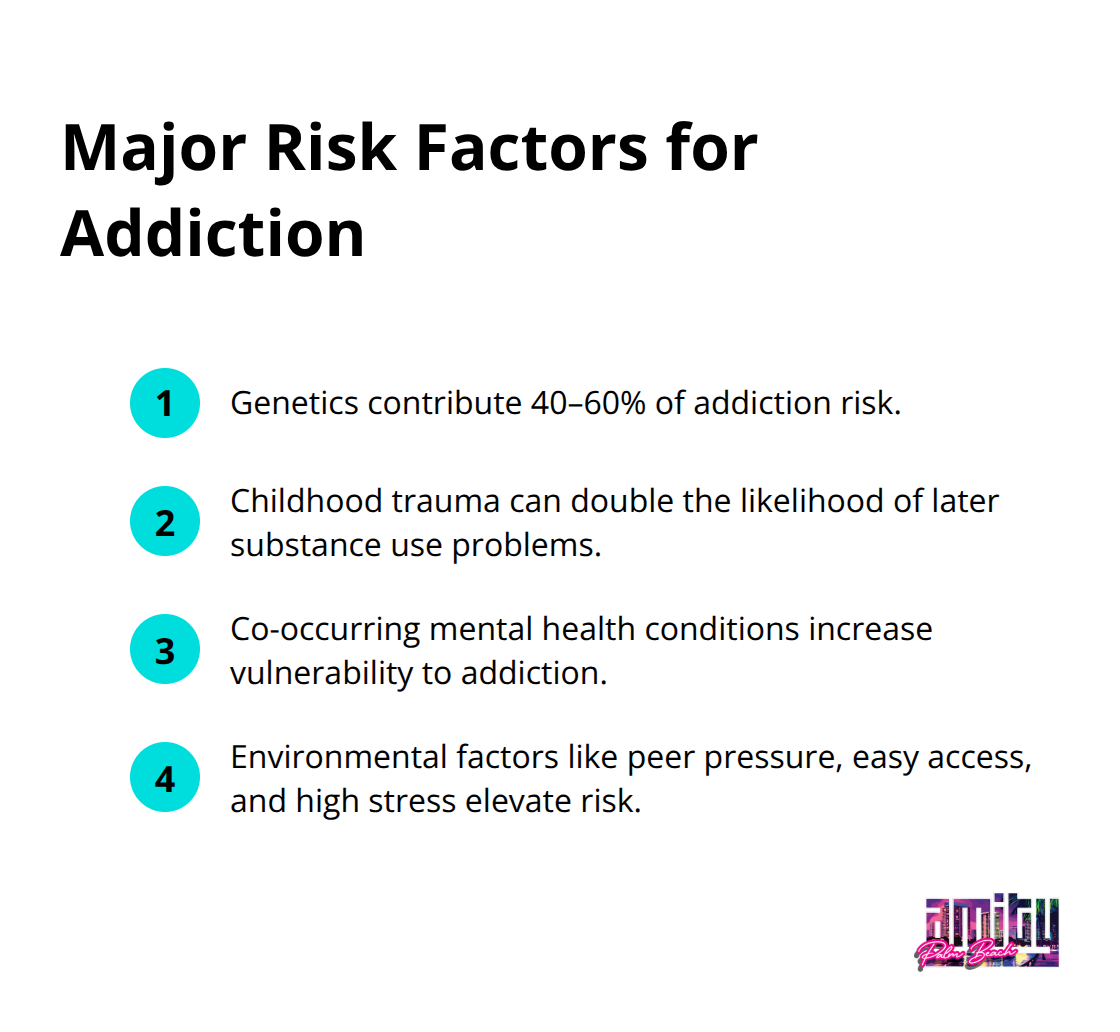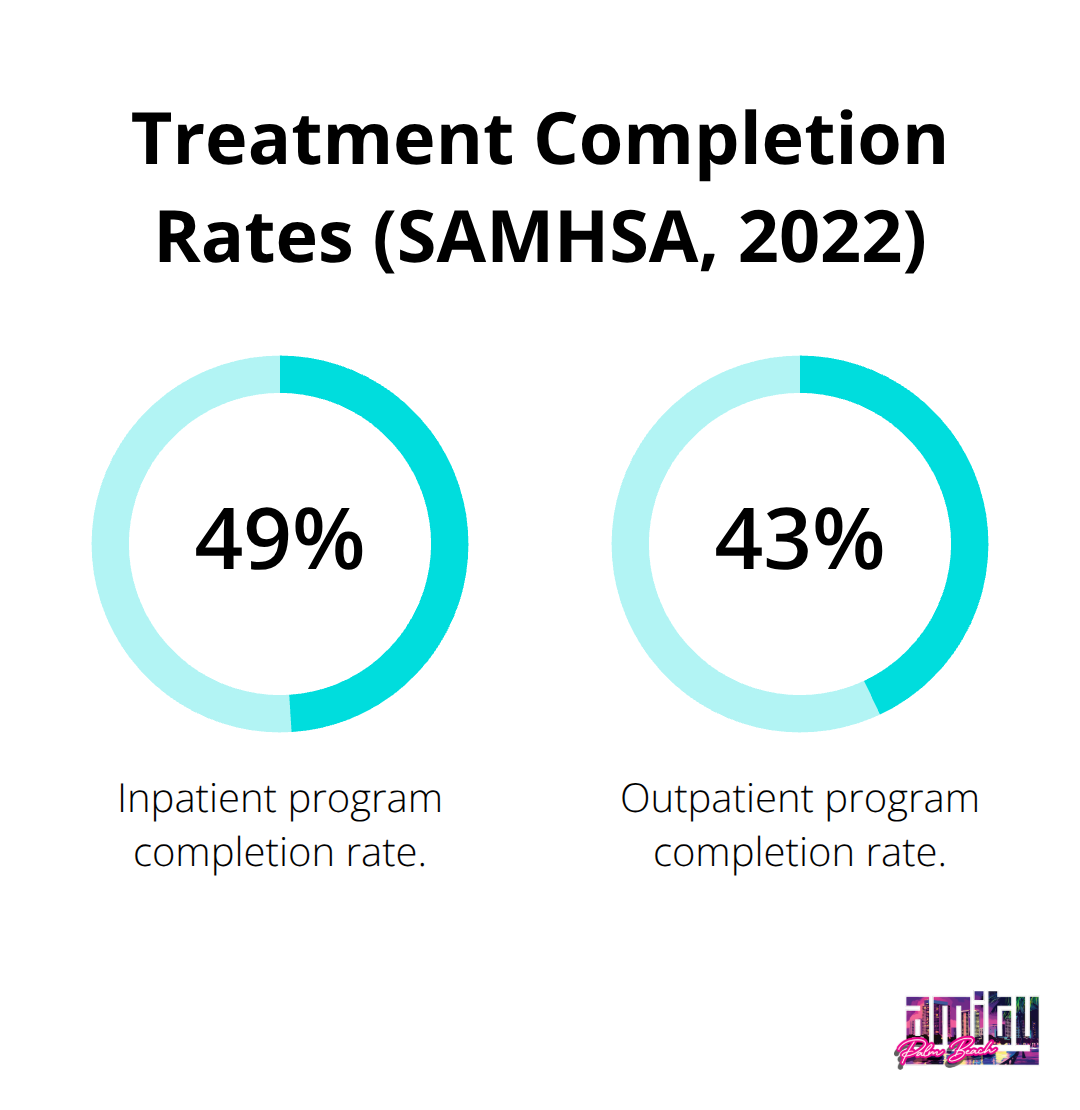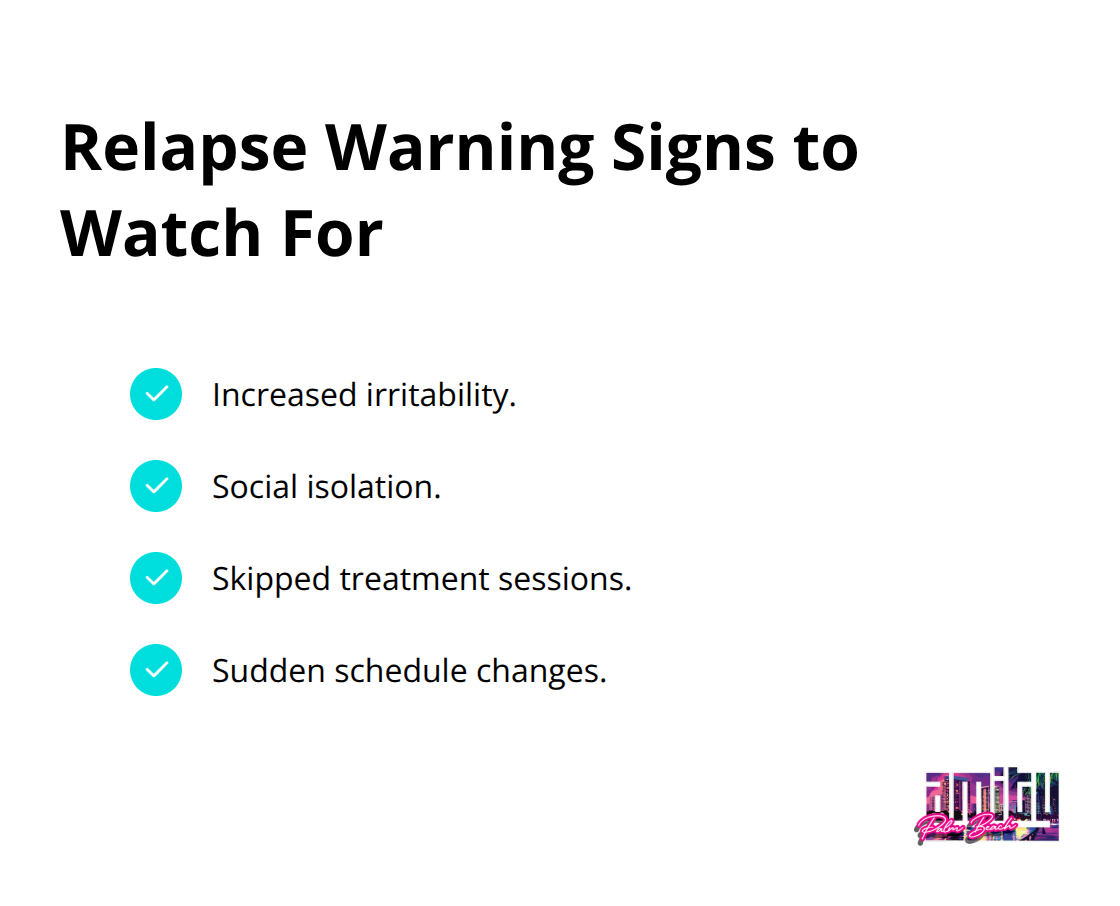Addiction affects millions of Americans, yet widespread myths continue to create barriers to effective treatment. Understanding addiction and recovery requires looking beyond stereotypes to see the medical reality.
We at Amity Palm Beach know that families often feel overwhelmed when facing addiction treatment decisions. This guide provides evidence-based insights to help you navigate this challenging but hopeful journey.
What Is Addiction Really
Addiction is a chronic brain disease, not a moral failing or lack of willpower. The National Institute on Drug Abuse confirms that repeated substance use literally changes brain structure and function, particularly in areas that control decision-making, learning, and memory. These changes explain why people with addiction cannot simply choose to stop using substances, despite devastating consequences. One in 14 Americans experiences a substance use disorder (according to the Centers for Disease Control and Prevention), making this a widespread medical condition that requires professional addiction treatment.
The Brain Science Behind Addiction
Substances hijack the brain’s reward system and flood it with dopamine, creating artificial pleasure signals far stronger than natural rewards like food or social connection. Over time, the brain reduces its natural dopamine production and requires increasingly larger amounts of the substance to achieve the same effect. This biological process creates tolerance and physical dependence, which makes recovery without medical support extremely difficult and potentially dangerous.
Dangerous Myths That Block Recovery
The biggest barrier to effective treatment remains the belief that addiction stems from weak character or poor choices. This stigma prevents many people with substance use disorders from seeking treatment. Another harmful myth suggests that people must hit rock bottom before recovery can begin. Early intervention actually produces better outcomes and prevents the severe consequences that rock bottom thinking promotes.
Real Risk Factors You Need to Know
Genetics account for 40-60% of addiction risk, meaning family history significantly increases vulnerability. Trauma, particularly childhood experiences, doubles the likelihood of developing substance use problems later in life. Mental health conditions create additional risk, with many people with addiction also having co-occurring disorders like depression or anxiety. Environmental factors include peer pressure, easy access to substances, and high-stress situations that also contribute to addiction development.

Understanding these scientific realities helps families make informed decisions about treatment approaches and timing.
The Recovery Process and Treatment Options
Recovery follows predictable stages that help families understand the journey ahead. The stages of change model shows that people move through precontemplation, contemplation, preparation, action, and maintenance phases. Most individuals cycle through these stages multiple times before they achieve lasting sobriety, with the Substance Abuse and Mental Health Services Administration confirming that multiple attempts are normal.
The action stage requires the most intensive support, as people actively work to change their lives and need professional help to manage cravings and emotional challenges. Maintenance becomes the longest phase, where ongoing practices like support group attendance and self-care prevent relapse.
Evidence-Based Treatments That Actually Work
Cognitive Behavioral Therapy shows effectiveness among people who use stimulants, while Medication-Assisted Treatment demonstrates significant benefits for opioid use disorders. Inpatient treatment completion rates reach 49%, compared to 43% for outpatient programs based on SAMHSA data from 2022.

The most effective approaches combine multiple interventions rather than rely on single methods. Dialectical Behavior Therapy proves particularly effective for people with co-occurring mental health conditions, which affects a significant portion of individuals with substance use disorders according to national surveys.
Why Professional Medical Support Changes Everything
Attempting recovery without medical supervision creates unnecessary risks and reduces success rates dramatically. Medical detoxification provides 24/7 monitoring during withdrawal, preventing potentially life-threatening complications from alcohol or benzodiazepine cessation.
Professional treatment programs offer structured environments where people learn coping strategies and problem-solving skills that prove essential for maintaining sobriety long-term. Aftercare support following initial treatment significantly improves outcomes by helping people implement learned strategies in real-world situations.
The next phase of recovery involves understanding how family support can provide meaningful support while maintaining their own well-being throughout this process. For those seeking comprehensive care, professional addiction treatment provides the foundation for lasting recovery.
How Can You Support Someone in Recovery
Family members and friends play a pivotal role in recovery success, yet many well-intentioned supporters unknowingly create obstacles. Research highlights the various and complex issues which addiction-affected families go through, demonstrating that family involvement significantly improves outcomes. The key lies in providing support without enabling destructive behaviors.
Practical Ways to Help Without Enabling
Emotional support means you listen without judgment while you refuse to make excuses for addictive behaviors. Financial boundaries prove essential – never provide money directly, but offer to pay bills or purchase necessities instead. Transportation to treatment appointments shows support while you maintain accountability. Participate in family therapy sessions when invited, as these sessions teach communication skills that benefit the entire family system. Avoid discussions about past mistakes repeatedly, which creates shame that often triggers relapse episodes.
Boundaries That Actually Work
Clear consequences must follow broken agreements, and consistency matters more than severity. Remove substances from shared spaces completely – even social drinking creates unnecessary temptation during early recovery phases. Establish specific hours for visits and communication guidelines that respect both parties’ needs. Financial boundaries include refusal to pay legal fees related to substance use or cover debts accumulated during active addiction periods. These boundaries protect your well-being while they encourage personal responsibility.
Warning Signs You Need to Recognize
Progress indicators include improved sleep patterns, better hygiene habits, consistent attendance at treatment appointments, and renewed interest in previously enjoyed activities. Relapse warning signs often appear weeks before actual substance use resumes – watch for increased irritability, social isolation, skipped treatment sessions, or sudden schedule changes.

After 5 years of continuous sobriety, a person’s risk of relapse drops to 15%, making early detection and relapse support during the first years particularly important for long-term success.
When Professional Help Becomes Necessary
Professional intervention becomes necessary when family support alone proves insufficient. Licensed therapists provide specialized tools that families cannot offer independently. Medical supervision prevents dangerous complications during withdrawal phases that family members cannot safely manage. Treatment programs offer structured environments where people learn coping strategies that prove essential for maintaining sobriety long-term.
Final Thoughts
Understanding addiction and recovery transforms how families approach this medical condition. The science shows addiction changes brain structure, which makes professional treatment necessary rather than optional. Recovery follows predictable stages, with most people requiring multiple attempts before they achieve lasting sobriety.
Family support accelerates recovery when combined with clear boundaries and professional guidance. The 88.4% of people in recovery who report good quality of life demonstrates that lasting change remains achievable (Recovery Research Institute). Early intervention produces better outcomes than waiting for rock bottom situations.
We at Amity Palm Beach provide evidence-based treatment that addresses both addiction and co-occurring mental health conditions. Recovery requires courage, professional support, and time. The 29.3 million Americans who have resolved substance use problems prove that lasting recovery happens every day, and professional addiction treatment provides the foundation that makes sustainable sobriety achievable for everyone ready to begin this journey.


